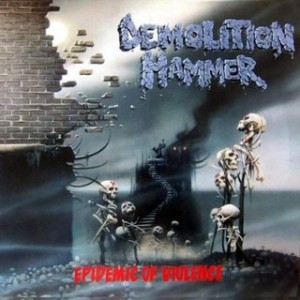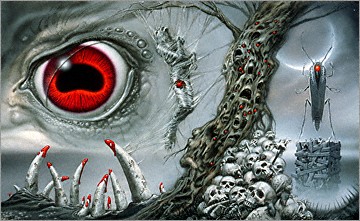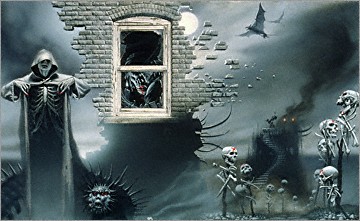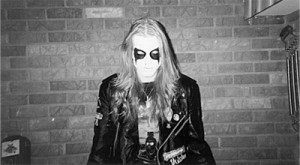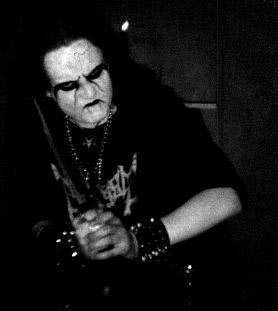
1. Introduction
2. The End of the Millennium: The Collapse of the Integrity of the “Scene”
3. Priests of Black Metal: The Surrealist Medievalist Reformation
4. Warriors of Black Metal: The Militant Romanticist Reformation
5. Evil Pseudo-art and the Rise of the Hipster: Revolution or Death?
Introduction
Art must excite the imagination. This is a condition of aesthetic effect, and therefore a fundamental law of all the fine arts. But it follows from this that not everything can be given directly to the senses through the work of art, but only as much as is required to lead the imagination on to the right path. Something, and indeed the final thing, must always be left over for it to do.
– Arthur Schopenhauer, On the Inner Nature of Art
Black metal music is one of these great arts. There is no religion mixed with Black metal! When religions are mixed to music it result feeble feelings, pseudo-art.
– Wlad Drakkheim (Vlad Tepes)
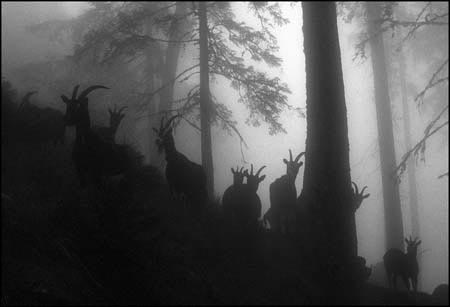 Histories of early black metal are dime a dozen nowadays and by now you probably know how Mayhem and Burzum came about, if you are interested, and have figured out why the churches were burnt, if you are intelligent. However, what happened after 1995 is rarely put under reasonable scrutiny because as in politics, recent events contain too much unexposed lies and hidden agendas to bear daylight.
Histories of early black metal are dime a dozen nowadays and by now you probably know how Mayhem and Burzum came about, if you are interested, and have figured out why the churches were burnt, if you are intelligent. However, what happened after 1995 is rarely put under reasonable scrutiny because as in politics, recent events contain too much unexposed lies and hidden agendas to bear daylight.
This article intends to take the bull by the horns and explain through an eyewitness’s observation the development of the philosophy of black metal from the first divide (the cultist vs. the crowdist) that occurred around 1996 to the second divide (the realist vs. the hipster) that occurred approximately ten years later.
The End of the Millennium: The Collapse of the Integrity of the “Scene”
When the blaze in the northern sky had died out and the geniuses of the previous generation were either rotting in a jail or in a pub, a new generation sought to rediscover the meaning of black metal as a lifestyle and as a Weltanschauung. The masses, representatives of mediocrity, had already found their way into black metal when most of the original acts had betrayed the ancestral trust by developing into a theatre of gothic makeups, glam rock attitudes and weak synth-based pseudo-heroic anthems.
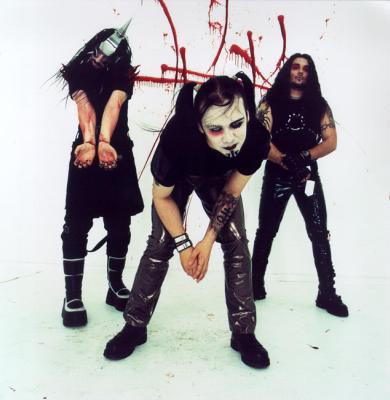 The Internet grew into a unifying, though disputed and hated, medium for the black metal underground to bicker about trivialities, form projects and spread news and gossip. Forums and websites contained information about hundreds of new bands, far from the old realm of tape traders and fanatics who kept meticulous contact with friends abroad through letters and phone calls. Also, the beloved underground zine, responsible for establishing the mystique around the early 90s black metal scene, was relegated to minor status as an upholder of the cursed movement.
The Internet grew into a unifying, though disputed and hated, medium for the black metal underground to bicker about trivialities, form projects and spread news and gossip. Forums and websites contained information about hundreds of new bands, far from the old realm of tape traders and fanatics who kept meticulous contact with friends abroad through letters and phone calls. Also, the beloved underground zine, responsible for establishing the mystique around the early 90s black metal scene, was relegated to minor status as an upholder of the cursed movement.
Because the crowds present were in no way contributing to the development of black metal, as opposed to practically everyone in the beginning of 90s who was interested, the scene started to show the same fissures that had obliterated punk, hardcore and a whole lot of other once-radical artistic movements to relic status. The scene grew introverted because the outside did not seem to be interested in participating in the original barbaric-Faustian quest for freedom in darkness, even if hoarding information and releases. The scene rotated around people who, despite their intelligence, were reluctant to break genre barriers because their attitude was commitment, not innovation.
Purity of intent became mangled in a scene setting; the desire to bring power and authenticity back, to solidify black metal fans into a commando force for opposing the democratic spinelessness of modern life, was mostly a disguise. The greatest psychological motivation was the worship of one’s own personality and identity and it’s separateness from others by self-aggrandizement, by wallowing in ideas such that one is extreme, unique and important. They were like the proud fallen angels but only in the surface aspects; the core was a youth subculture among many others who share exactly the same kind of attitudes and personality types.
 The black metal underground adopted more and more extreme stances to make them impenetrable to the masses that were threatening to turn black metal into a parody and a freakshow. One of these positions was the National Socialist black metal, which had been already perpetrated in the early 90s by Absurd and Lord of Evil but failed to become a widespread movement until the end of the decade when the Allgermanische Heidnische Front and the Pagan Front along with, intentionally or not, Moynihan’s and Søderlund’s book Lords of Chaos promoted the mixture of national traditionalism and romantic black metal, to the disgust of the part of the scene retaining the leftist influence from grindcore.
The black metal underground adopted more and more extreme stances to make them impenetrable to the masses that were threatening to turn black metal into a parody and a freakshow. One of these positions was the National Socialist black metal, which had been already perpetrated in the early 90s by Absurd and Lord of Evil but failed to become a widespread movement until the end of the decade when the Allgermanische Heidnische Front and the Pagan Front along with, intentionally or not, Moynihan’s and Søderlund’s book Lords of Chaos promoted the mixture of national traditionalism and romantic black metal, to the disgust of the part of the scene retaining the leftist influence from grindcore.
 For another segment of the underground, the message chosen was as corrupted, cryptic and vile as possible. Inspired by the first incarnation of black metal and of everything that was filthy and anti-social in the underground, satanic nihilists waged war on everything, as exemplified by the album titles Cut Your Flesh and Worship Satan (Antaeus) and Kill Yourself or Someone You Love (Krieg). The actual message was hidden under the surface, for it utilized spewed vitriol for an introverted self-study, which was concealed as an attack. The Satanists and nihilists considered worldly things as folly, a curse imposed by God or nature upon the Faustian soul – all attachment and love in fleshly things was false figments of illusion, much like the Gnostic Christians believed.
For another segment of the underground, the message chosen was as corrupted, cryptic and vile as possible. Inspired by the first incarnation of black metal and of everything that was filthy and anti-social in the underground, satanic nihilists waged war on everything, as exemplified by the album titles Cut Your Flesh and Worship Satan (Antaeus) and Kill Yourself or Someone You Love (Krieg). The actual message was hidden under the surface, for it utilized spewed vitriol for an introverted self-study, which was concealed as an attack. The Satanists and nihilists considered worldly things as folly, a curse imposed by God or nature upon the Faustian soul – all attachment and love in fleshly things was false figments of illusion, much like the Gnostic Christians believed.
Priests of Black Metal: The Surrealist Medievalist Reformation
The heirs of the nihilist black metal culture became known as the religious black metal scene, because in the original sense of the word religare, the artists sought to strip the world of its importance by detachment, perversion, self-flagellation and insanity to reach the transcendental quietude of the noumenalworld, perceived as a spiritual death. The ideal was modelled on characters like Dead and Euronymous of Mayhem, who were seen as the original martyrs of black metal.
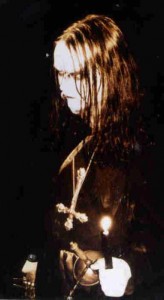 The aesthetic defined by Mayhem on the classic De Mysteriis Dom Sathanas, an amalgamation of the theological and the heretical, a re-interpretation of the sacred writings of Christianity, was given a full treatment by bands that musically attempted to find a balance between the creation of “experimental” black metal and “true” black metal (essentially two trends that had been around since new black metal became mostly home recorded and free of quality expectations).
The aesthetic defined by Mayhem on the classic De Mysteriis Dom Sathanas, an amalgamation of the theological and the heretical, a re-interpretation of the sacred writings of Christianity, was given a full treatment by bands that musically attempted to find a balance between the creation of “experimental” black metal and “true” black metal (essentially two trends that had been around since new black metal became mostly home recorded and free of quality expectations).
The audience who felt more kinship with pagan ideals, heroism and warfare grew over the years to hate the depressive Satan-worshipping bands, not because they would oppose the best of their music, but because the scene concentrated into seeking whatever seemed most radical and hateful in the limited perspective of a Scandinavian middle class young man from an atheistic family. It was a very limited world and while some occultists were able to discuss their way around this problem, the limitation culminated artistically in satanic black metal bands going by hordes to the modern equivalent of Sunlight studios, the Necromorbus, to create endless similar sounding clones, many of which were pleasing listens but historically nothing more than footnotes.
The prime motivation to create this new style of theistic black metal was that newly found emphasis on production and melody that gave them a chance to try out their hand on professional musicianship combined with literate Satanism, and thus escape the falsely assumed impression of the last decade that you were either a capable musician or an extremist, not both.
 The target audience, which was mostly composed of young, sensitive, intelligent and fragmented personalities with an emotional attachment to the mystique of Satan and Christianity, mostly liked it since the music was tried and true melodic black metal not far from that of the eternal crowd favorites Marduk and Dissection, with updated imagery and lyrics. It was also suitable to the retro-purist tendency to reject political developments in black metal on the grounds that such were not originally a part of it, despite the fact that they themselves introduced many aspects such as the Bible quotations and theological analysis which belonged to it even less.
The target audience, which was mostly composed of young, sensitive, intelligent and fragmented personalities with an emotional attachment to the mystique of Satan and Christianity, mostly liked it since the music was tried and true melodic black metal not far from that of the eternal crowd favorites Marduk and Dissection, with updated imagery and lyrics. It was also suitable to the retro-purist tendency to reject political developments in black metal on the grounds that such were not originally a part of it, despite the fact that they themselves introduced many aspects such as the Bible quotations and theological analysis which belonged to it even less.
Warriors of Black Metal: The Militant Romanticist Reformation
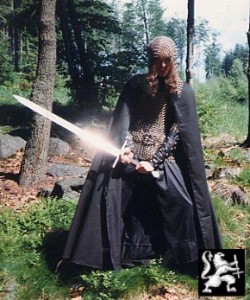 The pagan warriors fared a little better on the quest for Romantic, neo-classical black metal art. The core bands of nationalist pagan black metal, such as Totenburg, Heldentum and Eisenwinter, realized a synthesis of the street punks’ (through Oi and RAC) music with folk and heavy metal and some of the naturalistic black metal instinct of Ildjarn and Burzum. These bands steered clean from pleasing the public with melodic death metal influences or digital production standards, while many others such as Temnozor, Kroda, later Forest and Graveland, led their epics by vocal and folk instrument melodies, influences from symphonic soundtracks and recurring Hammerheart–era Bathory riffs, mostly in rock format.
The pagan warriors fared a little better on the quest for Romantic, neo-classical black metal art. The core bands of nationalist pagan black metal, such as Totenburg, Heldentum and Eisenwinter, realized a synthesis of the street punks’ (through Oi and RAC) music with folk and heavy metal and some of the naturalistic black metal instinct of Ildjarn and Burzum. These bands steered clean from pleasing the public with melodic death metal influences or digital production standards, while many others such as Temnozor, Kroda, later Forest and Graveland, led their epics by vocal and folk instrument melodies, influences from symphonic soundtracks and recurring Hammerheart–era Bathory riffs, mostly in rock format.
Despite the extreme horror incited in some countries and scenes by the open admiration of the principles of Hitler and the SS, part of its power in the mind of the participants was also that it was positive: encouraging respect for ancient tradition, working for society and appreciating love and friendship.
Norway’s black metal had played ruthlessly upon a reputation of morbid obsession and criminal darkness, preying upon the minds of weak-willed individuals who were seeking a chance to submit to the will towards death. NS influences in black metal had been a natural development for many key practitioners from Darkthrone to Impaled Nazarene regardless of whether or not they ever admitted to anything more than a slight inspiration and a shock statement. It gave a chance to balance the darkness of witch-cults with the light of European virtue.
 An esoteric nationalism, inspired by traditionalists Evola and Guénon and by philosophers Nietzsche and Bergson, also emerged, and was more sophisticated than the crude hedonism of LaVey or the superstitions of Elizabethan Devil worshippers. But when presented to the working class it meant believing that the sickness of the world is a manifestation of the plots of other races, particularly the Jews, for the subversion of the higher culture of the White Aryan.
An esoteric nationalism, inspired by traditionalists Evola and Guénon and by philosophers Nietzsche and Bergson, also emerged, and was more sophisticated than the crude hedonism of LaVey or the superstitions of Elizabethan Devil worshippers. But when presented to the working class it meant believing that the sickness of the world is a manifestation of the plots of other races, particularly the Jews, for the subversion of the higher culture of the White Aryan.
In fact, only a small part of the fans of NSBM ever were devotees of pure National Socialism. The movement of nationalist pagan black metal was united by the opposition of globalization, multiculturalism, crime and vice perceived by them to be the import of African and Semitic races to Europe: drugs, rape, apathy and disrespect for the local authority, which a regular Scandinavian tends to trust implicitly. Additionally, communism and anarchism were seen as anti-national and anti-cultural forces that have the power to assume control in the media under various guises.
While many of the aesthetic ideals of NSBM, such as respect, healthiness, personal integrity, constructive activity and diligence in work, were close to being acceptable in mainstream European societies, in general the involved characters were dedicated individuals facing hatred and opposition in all directions and actively treating life as a battle-like challenge. The movement could act as a representation of the tradition and
will of any social class in Europe, so that both those with lower and higher education could find their own ways to see the core ideal: an agreement of a very common sense rooted resistance to multiculturalism, runes and the metaphysics of Wiligut and Heidegger.
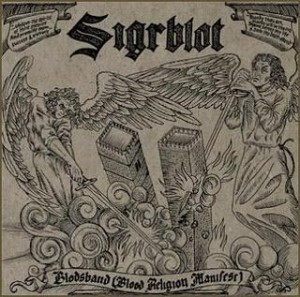 The ideology did not encourage escapism through occult and religious experience, or delving deep into the decadent side of modern society. Nor did it deny any of the basic wishes and instincts of man such as having a constructive job, raising a family or having a good time with friends and warriors. But the stigma — and in some countries, criminality — of the symbology forced the adherents to always be careful, prepare for confrontation and face all the consequences of the living the worst possible implications of his ideal.
The ideology did not encourage escapism through occult and religious experience, or delving deep into the decadent side of modern society. Nor did it deny any of the basic wishes and instincts of man such as having a constructive job, raising a family or having a good time with friends and warriors. But the stigma — and in some countries, criminality — of the symbology forced the adherents to always be careful, prepare for confrontation and face all the consequences of the living the worst possible implications of his ideal.
The youth took this by the face value and were excited about the chance to do something on the streets, be it simply dressing in camo pants and Dr. Martens or actually joining local skinheads or political organizations. Many of them were of the opinion that the virtue of the message and imparted “Aryan” aesthetics, and the right attitude (underground, intolerant, street credible) behind it are what makes black metal worthwhile, not intellectual satisfaction or beauty.
Evil Pseudo-art and the Rise of the Hipster: Revolution or Death?
The emphasis on action and practical message differentiated “Aryan” black metal from what has been the crux of the satanic black metal of the new millennium, which in the spirit of Emperor and particularly Dissection has been creating requiems and sonatas to Him from a more learned and encyclopedic background, quoting the likes of Dali, thus creating hipster-friendly amalgamations of styles that suggest intelligence and taste but only little activity and spirit, or in the words of Vlad Tepes, “pseudo-art”.
In nihilist, depressive and theistic black metal rhetoric, the most vile and offensive threats were brought upon mankind and society in praise of the Devil while concepts such as rape, abuse and suicide were glorified. In some circles it became a game of how low one can sink into the medievalist approach to Satanism, inspired by nothing so much as a Euronymous statement taken out of context: “We are but slaves of the one with horns.” But since the masquerade was obvious, satanic black metallers never seemed like criminals to society except in cases where the adherents actively sought participation in drugs and assaults.
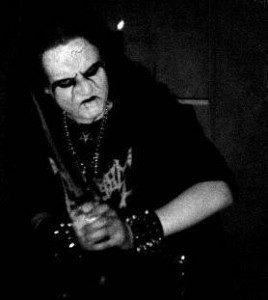 It was one of the most two-faced cults seen in metal – extremely powerful symbolism and literature was abused by people who constantly admitted to failure and self-defeated feelings in the guise of a reborn Gnostic/Jesuit theology that denies the world having anything of value. Artists and philosophers gave long and explanatory answers in interviews that were too difficult for the majority to understand and thus ended up taken out of context. Many, though, considered this the natural way of “evil”: the weak and the stupid deserve to be corrupted, driven into suicide, fear and madness by the power of Lucifer’s light.
It was one of the most two-faced cults seen in metal – extremely powerful symbolism and literature was abused by people who constantly admitted to failure and self-defeated feelings in the guise of a reborn Gnostic/Jesuit theology that denies the world having anything of value. Artists and philosophers gave long and explanatory answers in interviews that were too difficult for the majority to understand and thus ended up taken out of context. Many, though, considered this the natural way of “evil”: the weak and the stupid deserve to be corrupted, driven into suicide, fear and madness by the power of Lucifer’s light.
What seemed to make Devil worshipping black metal dangerous and potent was its mercurial nature; unlike in the nationalist pagan scene, one’s class and education completely determined the understanding of the given compulsory Bible, Bataille and Sitra Ahra quotations. A son of a religious family with no higher education would see the Devil worshippers’ theology in a totally different perspective from a university student of comparative religion or literature.
Especially through the down-to-earth, joyless Protestantism of Scandinavia, faith and belief in gods and the supernatural are approached with mania, neuroses and fetishism and the resulting phenomenon glorified anyone who committed atrocities in the name of primitive Devil worship. The educated middle and upper classes both loathed and envied the non-educated and thus “untamed” madman because he seemed more capable of spontaneous action and breaking free of the foulest captor of the middle class: the desire for comfort and to avoid suffering.
The will to join the masquerade, to choose for oneself the identity of a “pagan warrior” or “a Devil worshipper” has fed the black metal market for the last decade. Despite some achievements and innovations in philosophical and musical expression, it has contributed to the downfall of black metal in that it has been all too easy for the crowd to gather under the banners, to create redundant projects that copy the originals without understanding the message and to buy everything that conforms exactly to the imagery one wishes to associate oneself with.
 If one is allowed to bluntly generalize, one tends to see on message boards nationalists expressing themselves with a crude, uneducated language reminiscent of trailer park fascism, yet having a solid idea worthy of being developed further, a meaning behind the words. On the other hand a Theistic Satanist can easily lecture you on the Blavatskyan concept of Ego as Lucifer, or on the problems of empirical science, but one is left quite unsure why it is important.
If one is allowed to bluntly generalize, one tends to see on message boards nationalists expressing themselves with a crude, uneducated language reminiscent of trailer park fascism, yet having a solid idea worthy of being developed further, a meaning behind the words. On the other hand a Theistic Satanist can easily lecture you on the Blavatskyan concept of Ego as Lucifer, or on the problems of empirical science, but one is left quite unsure why it is important.
The best black metal of the decade has not been revolutionary in any sense, rather interesting explorations on encoding message into either a rediscovered sense of classical melody or the soothing but barbaric minimalism of ambient. A minority still tries to seek out the best amongst the piles of waste created by the attention seekers; many from the original scene have lost interest in practically all black metal created since ‘95.
Master purveyors of black metal have sought to describe a world of fallen souls and unremembered voices, as if they have brought to life the curses of our ancestors who scream in the Abyss their indictment of the world of man, which has failed to uphold ancient, heroic and traditional laws and to pay the proper respect to the spirits of death and of darkness.
If we could catch for an instant a glimpse of the might and terror of the pure universe, unfettered by the shackles of human perception, our paths would be revealed as singular paths of light amidst infinite space, strands weaving patterns of complexity and beauty, constantly changing nature through an evolution borne by the battle waged by opposing principles.
Written by Devamitra
No CommentsTags: zine-zines
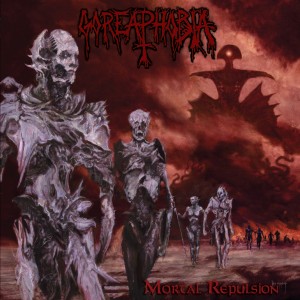
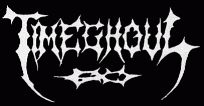 TIMEGHOUL are one of those death metal rarities: a band with only demo-level output that often outshines that of their more well known peers. Their brand of American-styled death metal was complex, eclectic and, most importantly, constructed on a foundation of solid songwriting and and intriguing concept. Guitarist Gordon Blodgett was kind enough to speak to us about their obscure legacy.
TIMEGHOUL are one of those death metal rarities: a band with only demo-level output that often outshines that of their more well known peers. Their brand of American-styled death metal was complex, eclectic and, most importantly, constructed on a foundation of solid songwriting and and intriguing concept. Guitarist Gordon Blodgett was kind enough to speak to us about their obscure legacy.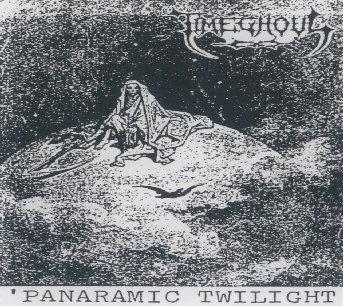 I have seen the TIMEGHOUL lyrics described as “fantasy,” which seems true. Like all good fantasy though, some seem to be truth buried under complex metaphor. They are also very well composed. Was there any kind of meta-concept, or were they written as seperate short stories that happened to play out well as lyrics?
I have seen the TIMEGHOUL lyrics described as “fantasy,” which seems true. Like all good fantasy though, some seem to be truth buried under complex metaphor. They are also very well composed. Was there any kind of meta-concept, or were they written as seperate short stories that happened to play out well as lyrics?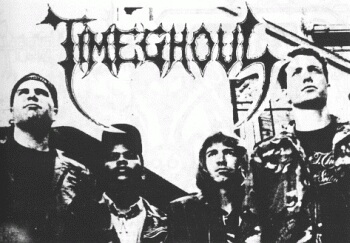
 Coming from the anarcho-punk school of musical and ideological tradition, and finally releasing this, their debut full length in 1985, Amebix had already released a series of excellent EP’s in the early half of the decade. The unique character of their music was a sound that fused the violent hardcore punk of Discharge with the circulative, repetitious song structures that were a staple of post-punk acts such as Killing Joke and Public Image Ltd. Escaping the social-activist themes that were a staple of hardcore, and transcending the melancholia and fatalism that was a common theme of post-punk, Amebix took on board the musical apparatus of both substyles and turned towards a contemplative, naturalistic direction that subverted the generalisation of how we associate themes with forms. Inspiration comes additionally from the NWOBHM of early Motorhead and Judas Priest in the crunching, percussive guitar playing that made itself a staple of speed metal and subsequently death metal. Drums batter clearly as if to stadium anthems, and boom with an echo one would clearly associate with said decade. Droning riffs make an appearance and have a harmonic depth to them that evoke the archaic and the dystopian much like Burzum and Godflesh simultaneously would do in their most prominent work. Whereas the metal subgenres of the 1980′s slowly influenced one anothers musical language, Amebix single handedly introduced new themes and formats that would become the structural basis of future acts to come, and alongside their compilation album No Sanctuary, this important work deserves it’s applause.
Coming from the anarcho-punk school of musical and ideological tradition, and finally releasing this, their debut full length in 1985, Amebix had already released a series of excellent EP’s in the early half of the decade. The unique character of their music was a sound that fused the violent hardcore punk of Discharge with the circulative, repetitious song structures that were a staple of post-punk acts such as Killing Joke and Public Image Ltd. Escaping the social-activist themes that were a staple of hardcore, and transcending the melancholia and fatalism that was a common theme of post-punk, Amebix took on board the musical apparatus of both substyles and turned towards a contemplative, naturalistic direction that subverted the generalisation of how we associate themes with forms. Inspiration comes additionally from the NWOBHM of early Motorhead and Judas Priest in the crunching, percussive guitar playing that made itself a staple of speed metal and subsequently death metal. Drums batter clearly as if to stadium anthems, and boom with an echo one would clearly associate with said decade. Droning riffs make an appearance and have a harmonic depth to them that evoke the archaic and the dystopian much like Burzum and Godflesh simultaneously would do in their most prominent work. Whereas the metal subgenres of the 1980′s slowly influenced one anothers musical language, Amebix single handedly introduced new themes and formats that would become the structural basis of future acts to come, and alongside their compilation album No Sanctuary, this important work deserves it’s applause. Following up the band’s debut album Tol Cormpt Norz Norz Norz, Impaled Nazarene opened the silo once again to release their deadliest missile of truly
Following up the band’s debut album Tol Cormpt Norz Norz Norz, Impaled Nazarene opened the silo once again to release their deadliest missile of truly 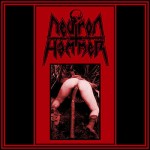
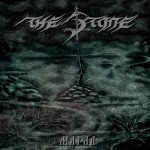
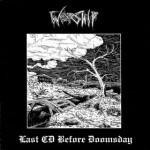


 Histories of early black metal are dime a dozen nowadays and by now you probably know how Mayhem and Burzum came about, if you are interested, and have figured out why the churches were burnt, if you are intelligent. However, what happened after 1995 is rarely put under reasonable scrutiny because as in politics, recent events contain too much unexposed lies and hidden agendas to bear daylight.
Histories of early black metal are dime a dozen nowadays and by now you probably know how Mayhem and Burzum came about, if you are interested, and have figured out why the churches were burnt, if you are intelligent. However, what happened after 1995 is rarely put under reasonable scrutiny because as in politics, recent events contain too much unexposed lies and hidden agendas to bear daylight. The Internet grew into a unifying, though disputed and hated, medium for the black metal underground to bicker about trivialities, form projects and spread news and gossip. Forums and websites contained information about hundreds of new bands, far from the old realm of tape traders and fanatics who kept meticulous contact with friends abroad through letters and phone calls. Also, the beloved underground zine, responsible for establishing the mystique around the early 90s black metal scene, was relegated to minor status as an upholder of the cursed movement.
The Internet grew into a unifying, though disputed and hated, medium for the black metal underground to bicker about trivialities, form projects and spread news and gossip. Forums and websites contained information about hundreds of new bands, far from the old realm of tape traders and fanatics who kept meticulous contact with friends abroad through letters and phone calls. Also, the beloved underground zine, responsible for establishing the mystique around the early 90s black metal scene, was relegated to minor status as an upholder of the cursed movement. The black metal underground adopted more and more extreme stances to make them impenetrable to the masses that were threatening to turn black metal into a parody and a freakshow. One of these positions was the National Socialist black metal, which had been already perpetrated in the early 90s by Absurd and Lord of Evil but failed to become a widespread movement until the end of the decade when the Allgermanische Heidnische Front and the Pagan Front along with, intentionally or not, Moynihan’s and Søderlund’s book Lords of Chaos promoted the mixture of national traditionalism and romantic black metal, to the disgust of the part of the scene retaining the leftist influence from grindcore.
The black metal underground adopted more and more extreme stances to make them impenetrable to the masses that were threatening to turn black metal into a parody and a freakshow. One of these positions was the National Socialist black metal, which had been already perpetrated in the early 90s by Absurd and Lord of Evil but failed to become a widespread movement until the end of the decade when the Allgermanische Heidnische Front and the Pagan Front along with, intentionally or not, Moynihan’s and Søderlund’s book Lords of Chaos promoted the mixture of national traditionalism and romantic black metal, to the disgust of the part of the scene retaining the leftist influence from grindcore. For another segment of the underground, the message chosen was as corrupted, cryptic and vile as possible. Inspired by the first incarnation of black metal and of everything that was filthy and anti-social in the underground, satanic nihilists waged war on everything, as exemplified by the album titles Cut Your Flesh and Worship Satan (Antaeus) and Kill Yourself or Someone You Love (Krieg). The actual message was hidden under the surface, for it utilized spewed vitriol for an introverted self-study, which was concealed as an attack. The Satanists and nihilists considered worldly things as folly, a curse imposed by God or nature upon the Faustian soul – all attachment and love in fleshly things was false figments of illusion, much like the Gnostic Christians believed.
For another segment of the underground, the message chosen was as corrupted, cryptic and vile as possible. Inspired by the first incarnation of black metal and of everything that was filthy and anti-social in the underground, satanic nihilists waged war on everything, as exemplified by the album titles Cut Your Flesh and Worship Satan (Antaeus) and Kill Yourself or Someone You Love (Krieg). The actual message was hidden under the surface, for it utilized spewed vitriol for an introverted self-study, which was concealed as an attack. The Satanists and nihilists considered worldly things as folly, a curse imposed by God or nature upon the Faustian soul – all attachment and love in fleshly things was false figments of illusion, much like the Gnostic Christians believed. The aesthetic defined by Mayhem on the classic De Mysteriis Dom Sathanas, an amalgamation of the theological and the heretical, a re-interpretation of the sacred writings of Christianity, was given a full treatment by bands that musically attempted to find a balance between the creation of “experimental” black metal and “true” black metal (essentially two trends that had been around since new black metal became mostly home recorded and free of quality expectations).
The aesthetic defined by Mayhem on the classic De Mysteriis Dom Sathanas, an amalgamation of the theological and the heretical, a re-interpretation of the sacred writings of Christianity, was given a full treatment by bands that musically attempted to find a balance between the creation of “experimental” black metal and “true” black metal (essentially two trends that had been around since new black metal became mostly home recorded and free of quality expectations). The target audience, which was mostly composed of young, sensitive, intelligent and fragmented personalities with an emotional attachment to the mystique of Satan and Christianity, mostly liked it since the music was tried and true melodic black metal not far from that of the eternal crowd favorites Marduk and Dissection, with updated imagery and lyrics. It was also suitable to the retro-purist tendency to reject political developments in black metal on the grounds that such were not originally a part of it, despite the fact that they themselves introduced many aspects such as the Bible quotations and theological analysis which belonged to it even less.
The target audience, which was mostly composed of young, sensitive, intelligent and fragmented personalities with an emotional attachment to the mystique of Satan and Christianity, mostly liked it since the music was tried and true melodic black metal not far from that of the eternal crowd favorites Marduk and Dissection, with updated imagery and lyrics. It was also suitable to the retro-purist tendency to reject political developments in black metal on the grounds that such were not originally a part of it, despite the fact that they themselves introduced many aspects such as the Bible quotations and theological analysis which belonged to it even less. The pagan warriors fared a little better on the quest for Romantic, neo-classical black metal art. The core bands of nationalist pagan black metal, such as Totenburg, Heldentum and Eisenwinter, realized a synthesis of the street punks’ (through Oi and RAC) music with folk and heavy metal and some of the naturalistic black metal instinct of Ildjarn and Burzum. These bands steered clean from pleasing the public with melodic death metal influences or digital production standards, while many others such as Temnozor, Kroda, later Forest and Graveland, led their epics by vocal and folk instrument melodies, influences from symphonic soundtracks and recurring Hammerheart–era Bathory riffs, mostly in rock format.
The pagan warriors fared a little better on the quest for Romantic, neo-classical black metal art. The core bands of nationalist pagan black metal, such as Totenburg, Heldentum and Eisenwinter, realized a synthesis of the street punks’ (through Oi and RAC) music with folk and heavy metal and some of the naturalistic black metal instinct of Ildjarn and Burzum. These bands steered clean from pleasing the public with melodic death metal influences or digital production standards, while many others such as Temnozor, Kroda, later Forest and Graveland, led their epics by vocal and folk instrument melodies, influences from symphonic soundtracks and recurring Hammerheart–era Bathory riffs, mostly in rock format. An esoteric nationalism, inspired by traditionalists Evola and Guénon and by philosophers Nietzsche and Bergson, also emerged, and was more sophisticated than the crude hedonism of LaVey or the superstitions of Elizabethan Devil worshippers. But when presented to the working class it meant believing that the sickness of the world is a manifestation of the plots of other races, particularly the Jews, for the subversion of the higher culture of the White Aryan.
An esoteric nationalism, inspired by traditionalists Evola and Guénon and by philosophers Nietzsche and Bergson, also emerged, and was more sophisticated than the crude hedonism of LaVey or the superstitions of Elizabethan Devil worshippers. But when presented to the working class it meant believing that the sickness of the world is a manifestation of the plots of other races, particularly the Jews, for the subversion of the higher culture of the White Aryan. The ideology did not encourage escapism through occult and religious experience, or delving deep into the decadent side of modern society. Nor did it deny any of the basic wishes and instincts of man such as having a constructive job, raising a family or having a good time with friends and warriors. But the stigma — and in some countries, criminality — of the symbology forced the adherents to always be careful, prepare for confrontation and face all the consequences of the living the worst possible implications of his ideal.
The ideology did not encourage escapism through occult and religious experience, or delving deep into the decadent side of modern society. Nor did it deny any of the basic wishes and instincts of man such as having a constructive job, raising a family or having a good time with friends and warriors. But the stigma — and in some countries, criminality — of the symbology forced the adherents to always be careful, prepare for confrontation and face all the consequences of the living the worst possible implications of his ideal. It was one of the most two-faced cults seen in metal – extremely powerful symbolism and literature was abused by people who constantly admitted to failure and self-defeated feelings in the guise of a reborn Gnostic/Jesuit theology that denies the world having anything of value. Artists and philosophers gave long and explanatory answers in interviews that were too difficult for the majority to understand and thus ended up taken out of context. Many, though, considered this the natural way of “evil”: the weak and the stupid deserve to be corrupted, driven into suicide, fear and madness by the power of Lucifer’s light.
It was one of the most two-faced cults seen in metal – extremely powerful symbolism and literature was abused by people who constantly admitted to failure and self-defeated feelings in the guise of a reborn Gnostic/Jesuit theology that denies the world having anything of value. Artists and philosophers gave long and explanatory answers in interviews that were too difficult for the majority to understand and thus ended up taken out of context. Many, though, considered this the natural way of “evil”: the weak and the stupid deserve to be corrupted, driven into suicide, fear and madness by the power of Lucifer’s light. If one is allowed to bluntly generalize, one tends to see on message boards nationalists expressing themselves with a crude, uneducated language reminiscent of trailer park fascism, yet having a solid idea worthy of being developed further, a meaning behind the words. On the other hand a Theistic Satanist can easily lecture you on the Blavatskyan concept of Ego as Lucifer, or on the problems of empirical science, but one is left quite unsure why it is important.
If one is allowed to bluntly generalize, one tends to see on message boards nationalists expressing themselves with a crude, uneducated language reminiscent of trailer park fascism, yet having a solid idea worthy of being developed further, a meaning behind the words. On the other hand a Theistic Satanist can easily lecture you on the Blavatskyan concept of Ego as Lucifer, or on the problems of empirical science, but one is left quite unsure why it is important.
 Entombed played a set that disappointed, and this was partially due a lack of their better material being played. Much of the setlist consisted of numbers that were lifted from their third full-length, Wolverine Blues and then onwards, with a lack of attention given to their more pioneering work that was put out on their first two albums, Left Hand Path and Clandestine. Songs were less death metal than they were an aggressive take on stoner rock, songs being much more inclined to the verse/chorus school of rock songwriting, the rhythms more inclined to provoke the shaking of hips and the tapping of feet than they were to bang heads. Whilst this was all good and competent, certainly the great soundtrack of an alcohol fueled evening in the capital of Eire, none of these works, as far as the reviewers opinion is concerned had the violent charge nor the momentum that characterized their legendary debut. Some credit will be given to the vocalist, whose onstage presence and frantic onstage manners gave more depth and urgency to songs that otherwise were devoid of it, and the guitarists tone was brilliant, the same buzzing, ‘chainsaw’ like tone that they helped pioneer back in the early nineties through maximum amplification. Entombed concluded their set with a brilliant rendition of Left Hand Path the staple and title track of their debut album, and it put a redeeming conclusion to what was an expertly performed, yet borderline mediocre set on occasions. It would be wonderful to hear what paths could be treaded if they realise the urgency that made their earlier music essential.
Entombed played a set that disappointed, and this was partially due a lack of their better material being played. Much of the setlist consisted of numbers that were lifted from their third full-length, Wolverine Blues and then onwards, with a lack of attention given to their more pioneering work that was put out on their first two albums, Left Hand Path and Clandestine. Songs were less death metal than they were an aggressive take on stoner rock, songs being much more inclined to the verse/chorus school of rock songwriting, the rhythms more inclined to provoke the shaking of hips and the tapping of feet than they were to bang heads. Whilst this was all good and competent, certainly the great soundtrack of an alcohol fueled evening in the capital of Eire, none of these works, as far as the reviewers opinion is concerned had the violent charge nor the momentum that characterized their legendary debut. Some credit will be given to the vocalist, whose onstage presence and frantic onstage manners gave more depth and urgency to songs that otherwise were devoid of it, and the guitarists tone was brilliant, the same buzzing, ‘chainsaw’ like tone that they helped pioneer back in the early nineties through maximum amplification. Entombed concluded their set with a brilliant rendition of Left Hand Path the staple and title track of their debut album, and it put a redeeming conclusion to what was an expertly performed, yet borderline mediocre set on occasions. It would be wonderful to hear what paths could be treaded if they realise the urgency that made their earlier music essential.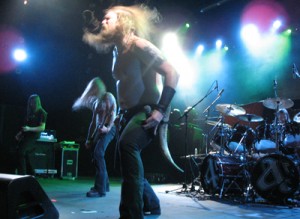 Amon Amarth played an excellent and intense set, mostly consisting of the melodic, fluid and anthemic traditional metal that they have come to be easily associated with. Infectious melodies and precise, double-bass lead drum rhythms bring to mind a hybrid of Blind Guardian and late period Immortal, whilst the muscle and simplicity of their music brings to mind fellow countrymen Unleashed in both the subject matter and the simplicity of the song structures. Musically Amon Amarth have an obvious strong commercial potential, sound highly accessible by the subgenre’s standards, and whilst they are not exactly breaking any new artistic ground, they are still workmanlike and this shows in what was a very well received and well performed set. Johan Hegg is a good front man and throughout the set uses the opportunity to incite the audience to terrace chant amidst his bellowing, whilst taking turns to consume from the mead horn that is his custom to bring on stage with him. Admittedly I would not consider these to be an act of the highest caliber, though they are unique in that they have one foot stood in the primitive and barbaric, with one firmly in the ability to reach out to a large audience. It was a privilege to be involved among the audience that night.
Amon Amarth played an excellent and intense set, mostly consisting of the melodic, fluid and anthemic traditional metal that they have come to be easily associated with. Infectious melodies and precise, double-bass lead drum rhythms bring to mind a hybrid of Blind Guardian and late period Immortal, whilst the muscle and simplicity of their music brings to mind fellow countrymen Unleashed in both the subject matter and the simplicity of the song structures. Musically Amon Amarth have an obvious strong commercial potential, sound highly accessible by the subgenre’s standards, and whilst they are not exactly breaking any new artistic ground, they are still workmanlike and this shows in what was a very well received and well performed set. Johan Hegg is a good front man and throughout the set uses the opportunity to incite the audience to terrace chant amidst his bellowing, whilst taking turns to consume from the mead horn that is his custom to bring on stage with him. Admittedly I would not consider these to be an act of the highest caliber, though they are unique in that they have one foot stood in the primitive and barbaric, with one firmly in the ability to reach out to a large audience. It was a privilege to be involved among the audience that night.